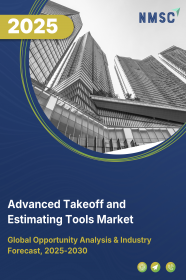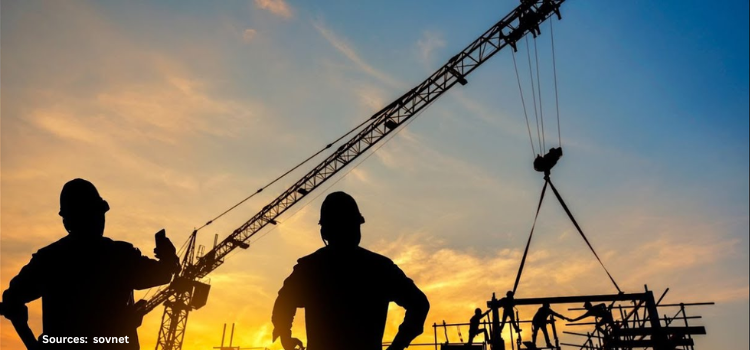
Construction Robot Market by Type (Cobot, Articulated Robots, Gantry Robots, Drones, Self-Driving Vehicles, Robotic Arm, Exoskeleton, and Other Types), by Automation (Fully Autonomous and Semi-Autonomous), by Function (Demolition, Bricklaying, 3D Printing, Concrete Structural Erection, Finishing Work, Doors and Windows Installation, and Others) - Global Opportunity Analysis and Industry Forecast 2022-2030
US Tariff Impact on Construction Robot Market
Trump Tariffs Are Reshaping Global Business
Market Definition:
The Construction Robot Market size was valued at USD 85.34 million in 2021 and is predicted to reach USD 242.38 million by 2030 with a CAGR of 11.8% from 2022-2030. Construction Robot refers to the equipment and robots used in order to automatically carrying out construction activities.
These robots are specifically designed to improve the speed and quality of construction work. They are widely employed in the execution of civil engineering projects and essential tasks such as positioning, demolishing, and tunneling at a construction site. Also, construction robots are used for the handling of bricks as well as other heavy blocks. Moreover, automatic drones are used to remotely monitor construction sites that are not easily accessible.
Market Dynamics and Trends
The demand for construction robot is rising due to rapid urbanization worldwide. Such rapid urbanization has led to more demand for residential and commercial buildings, which in turn boosts the demand of robots in the construction industry. Also, factors such as, advancements in technology and increasing demand for greater efficiency in construction activities are expected to propel the growth of the market during the forecast period. Moreover, use of construction robots provide more safety and security to the workers operating in adverse conditions.
However, shortage of skilled labor and high cost of equipment are factors restraining the growth of the market during the forecast period. On the other hand, technological advancements such as introduction of 3D printing robots that are used to design models of bridges and other projects, along with the introduction of aerial robotics that are used for safety inspection and site surveying are expected to create lucrative growth opportunities for the construction robot market players in future.
Market Segmentations and Scope of the Study:
The construction robot market has been segmented based on type, automation, function, payload, application, and geography. Based on type, the market is bifurcated into cobot, articulated robots, gantry robots, drones, self-driving vehicles, robotic arm, exoskeleton, and other types. Based on automation, the market is divided into fully autonomous and semi-autonomous. On the basis of function, the market is segmented into demolition, bricklaying, 3D printing, concrete structural erection, finishing work, doors and windows installation, and others. Based on payload, the market is classified into Upto 5 kg, 5-10 kg, 10-15 kg, and Above 15 kg. Based on application, the market is bifurcated into public infrastructure, commercial and residential buildings, and other applications. Geographic breakdown and analysis of each of the aforesaid segments includes regions comprising of North America, Europe, Asia-Pacific, and RoW.
Geographical Analysis
North America region holds the lion share of construction robot market and is expected to continue dominating the market during the forecast period. This is attributed to factors such as increasing investment by government bodies, need for reducing wastage, and rising demand for worker’s safety. Also, growth in the construction industry has encouraged companies to invest in automation, which is also contributing towards the growth of the market in this region.
Asia-pacific, on the other hand is expected to show a steady rise in the construction robot market due to growing urbanization and availability of natural resources throughout the region. Also, presence of many robotic manufacturing companies in Australia, India, China, and Japan, along with increasing demand of 3D printers for advanced construction are driving the growth of the construction robot market in this region.
Competitive Landscape
The market comprises of various players such as Advanced Construction Robot, Branch Technology, Built Robotics Inc., Construction Robotic, Kewazo GmbH, Brokk Global, Conjet AB, Beijing Borui Intelligent Control Technology Co. Ltd., Yingchuang Building Technique (Shanghai) Co.,Ltd. (Winsun) and DJI. These manufacturers are actively indulging in R&D initiatives, product & technology innovations, and industrial collaborations to enhance their product and increase their growth and geographical reach.
For instance, in September 2021, Kewazo Gmbh, a leader in construction robot market, announced that it had received a $5 million series A funding, bringing the total amount raised to $9 million. The startup offers robotic material hoist LIFTBOT for construction sites and industrial plants. Also, LIFTBOT saves up to 44 percent of man-hours, which directly addresses the labor shortage, a long-term problem in the industry. Moreover, the robot reduces the risk of accidents and improves the working conditions on-site.
Key Benefits
-
The construction robot market report provides a quantitative analysis of the current market and estimations through 2022-2030 that assists in identifying the prevailing market opportunities to capitalize on.
-
The study comprises a deep dive analysis of the construction robot market trend including the current and future trends for depicting the prevalent investment pockets in the market.
-
The information related to key drivers, restraints and opportunities and their impact on the Construction robot market is provided in the report.
-
The competitive analysis of the market players along with their market share in the construction robot market.
-
The SWOT analysis and Porters Five Forces model is elaborated in the study.
-
Value chain analysis in the market study provides a clear picture of the stakeholders’ roles.
Key Market Segments:
By Type
-
Cobot
-
Articulated Robots
-
Gantry Robots
-
Drones
-
Self-Driving Vehicles
-
Robotic Arm
-
Exoskeleton
-
Other Types
By Automation
-
Fully Autonomous
-
Semi-Autonomous
By Function
-
Demolition
-
Bricklaying
-
3D Printing
-
Concrete Structural Erection
-
Finishing Work
-
Doors and Windows Installation
-
Others
By Payload
-
Upto 5 kg
-
5-10 kg
-
10-15 kg
-
Above 15 kg
By Application
-
Public Infrastructure
-
Commercial and Residential Buildings
-
Other Applications
By Geography
-
North America
-
U.S.
-
Canada
-
Mexico
-
-
Europe
-
UK
-
Germany
-
France
-
Spain
-
Italy
-
Netherlands
-
Rest of Europe
-
-
Asia-Pacific
-
China
-
Japan
-
India
-
Australia
-
South Korea
-
Taiwan
-
Vietnam
-
Rest of Asia-Pacific
-
-
RoW
-
Latin America
-
Middle east
-
Africa
-
Key Players:
-
Advanced Construction Robot
-
Branch Technology
-
Built Robotics Inc.
-
Construction Robotic
-
Kewazo GmbH
-
Brokk Global
-
Conjet AB
-
Beijing Borui Intelligent Control Technology Co. Ltd.
-
Yingchuang Building Technique (Shanghai) Co.,Ltd. (Winsun)
-
DJI
REPORT SCOPE AND SEGMENTATION:
|
Parameters |
Details |
|
Analysis Period |
2021–2030 |
|
Base Year Considered |
2021 |
|
Forecast Period |
2022–2030 |
|
Market Size Estimation |
Million (USD) |
|
Market Segmentation |
By Type (Cobot, Articulated Robots, Gantry Robots, Drones, Self-Driving Vehicles, Robotic Arm, Exoskeleton, and Other Types), by Automation (Fully Autonomous and Semi-Autonomous), by Function, Demolition, Bricklaying, 3D Printing, Concrete Structural Erection, Finishing Work, Doors and Windows Installation, and Others), by Payload (Upto 5 kg, 5-10 kg, 10-15 kg, and Above 15 kg), by Application (Public Infrastructure, Commercial and Residential Buildings, and Other Applications) |
|
Geographical Segmentation |
North America (U.S., Canada, Mexico) Europe (UK, Germany, France, Spain, Italy, Netherlands, Rest of Europe), Asia-Pacific (China, Japan, India, Australia, South Korea, Taiwan, Vietnam, Rest of Asia-Pacific), Rest of the World (Latin America, Middle East, Africa) |
|
Companies Profiled |
Advanced Construction Robot, Branch Technology, Built Robotics Inc., Construction Robotic, Kewazo GmbH, Brokk Global, Conjet AB, Beijing Borui Intelligent Control Technology Co. Ltd., Yingchuang Building Technique (Shanghai) Co.,Ltd. (Winsun) and DJI. |

















 Speak to Our Analyst
Speak to Our Analyst





















